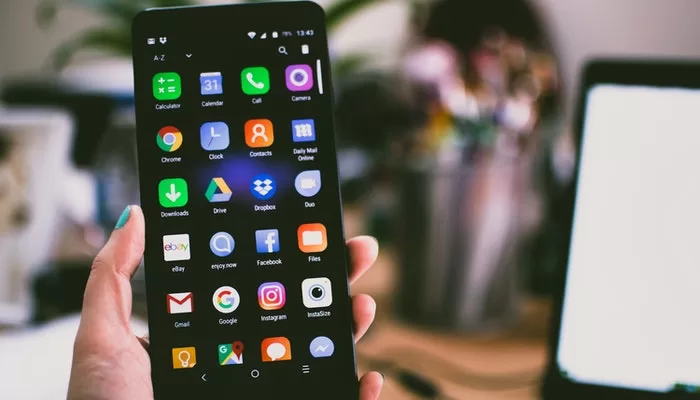Travel
Old Mobile Companies That Are Gone

Today’s competition in the mobile industry is cutthroat. Some companies have buckled from advancing their smartphones to the latest networks, while others completely shut down. Other companies pivot in their niche, but they all have one thing in common – defunct mobile phones.
In this write-up, we take a trip down memory lane and reminisce about the good and the bad of old mobile companies that are gone. Hopefully, you will know whether you own a fossil device and need to upgrade to 5G smartphones.
Motorola
Sadly, the inventor of the classic mobile phone has passed on to the next sphere. Motorola brought us the iconic flip phone, RAZZR, and the Motorola brick.
Motorola fell from the world’s number one phone manufacturer to a market share of nearly 6% in the UK. Lenovo, a Chinese laptop giant, purchased Motorola to breathe new life into the company. However, Lenovo rebranded the company, retaining the original brand name, Moto.
Lenovo phones are particularly obsolete in terms of 4 and 5G, Canada’s dominant cellular connection. You need 4G internet access to play games on the best casinos online in Canada and enjoy streaming content on Netflix and more.
Lenovo’s Vibe line and Moto aim to target a market share of smartphones costing $100 or less. But today, you don’t come across Lenovo’s phones in smartphone shops, indicative of the downfall of Motorola negatively rubbing off on Lenovo.
Siemens Mobile
Siemen’s “man’s most tenacious phone” extinction from the phone sphere is emotional to us. We grew up falling in love with Siemens phones for their simplistic design and unwavering network connection, even in remote places. Maybe the long aerial they had endured us to the phones.
The German mobile phone manufacturer enjoyed market dominance but fell from the competition of Motorola and Nokia. In 2005 the company sold its business to BenQ, a Taiwanese tech firm. BenQ learned the ropes of Siemens market-dominating strategies and enjoyed a stint at the top.
The downfall was pretty harsh as BenQ, operating under BenQ mobile for the mobile phone division, filed for bankruptcy in 2006. The last mobile phone from Siemens was in 2005.
BenQ Mobile
One small mistake could send you into oblivion in the mobile phone industry. Such was the case for BenQ, who made a billion-dollar mistake. BenQ mobile, a subsidiary of Ben Q, produced its first mobile phones under the BenQ-Siemens brand.
BenQ purchased Siemens Mobile at $1 billion and laid-off workers a year later after declaring bankruptcy. Perhaps a lesson to budding entrepreneurs in the tech industry is not to buy a dying company.
Ericsson
The Swedish mobile phone giant enjoyed years at the summit of the mobile phone industry with Nokia and Motorola. Ericsson operated as a subsidiary of the main Ericsson Company. The company issued a profit warning on the grounds of supply chain problems due to the fire in the New Mexico factory.
A series of joint ventures, stock splitting, and ineptness in the smartphone industry preceded the now-defunct Ericsson mobile division. In 2011 the mobile company sold all its shares to Sony for $1.2 billion ending the famous Sony Ericsson brand name.
Ericsson recognized their shortcomings to accelerate toward smartphones and exited the scene with honor, unlike our Taiwanese brothers – Ben Q.
LG
LG’s announcement to exit the smartphone industry was expected. For years the company had been reporting losses from its mobile phone division. LG pledged to fulfill the contractual obligations and shut down the company’s mobile phone division.
Plans are underway to transform the warehouses of mobile companies into smart appliance manufacturing plants. Life’s Good smartphones have a short lifespan, but they produce the final models already in the pipeline.
You will get up to three years of Android OS upgrades if you own an LG until you shelve your phone in a drawer.
A classic example of “the more you know, the less you diversify,” sums up LG’s presence in the smartphone industry.
Microsoft
Microsoft purchased Nokia’s equity in running the Lumia brand. Microsoft devices were infamously hard to customize due to the inaccurate adaptation from the PC-based operating system’s Windows OS versions.
Microsoft no longer produces mobile phones and ended its OS versions for smartphones.
Sagem Wireless
The Parisian firm manufactured popular budget and pocket-friendly phones in the late 2000s. However, they couldn’t keep up with mobile phone trends and pivoted as an original design manufacturer.
Sagem sold its mobile phone manufacturing division to MobiWire in 2011 and went into receivership.
Outlook
The mobile phone industry is awash with many manufacturers and top-line devices. It would be wise to manufacture phones that focus on the user more than the cost and design. Design is still vital, but in the end, it is the mobile phone company that guarantees users the ultimate experience that will continue dominating the market and not join old mobile companies that are gone.























































